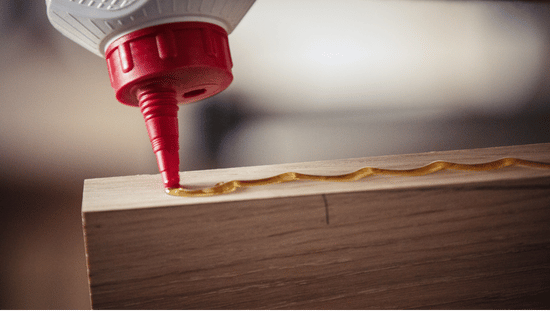
Properties and Overview of PVAc (Polyvinyl Acetate)
Overview:
 PVAc (Polyvinyl Acetate) is a versatile thermoplastic polymer widely used for its strong adhesive properties, flexibility, and film-forming abilities. Known as a key component in household glues and industrial adhesives, PVAc is a staple material in packaging, construction, woodworking, and textiles. Its affordability, ease of use, and compatibility with various substrates make it a critical polymer for numerous applications.
PVAc (Polyvinyl Acetate) is a versatile thermoplastic polymer widely used for its strong adhesive properties, flexibility, and film-forming abilities. Known as a key component in household glues and industrial adhesives, PVAc is a staple material in packaging, construction, woodworking, and textiles. Its affordability, ease of use, and compatibility with various substrates make it a critical polymer for numerous applications.
Production:
The production of PVAc involves the polymerization of vinyl acetate monomers through free-radical polymerization, often in aqueous emulsions. The result is a polymer that can be formulated into emulsions, powders, or solutions, depending on the intended application. PVAc is commonly used as a base material for adhesives and coatings or as an intermediate product for synthesizing other polymers, such as polyvinyl alcohol (PVA) and polyvinyl acetate copolymers. Additives can be incorporated to enhance its properties, such as improving water resistance or increasing flexibility.
Applications:
PVAc is best known for its role in adhesives, where it serves as the primary component in wood glues, school glues, and pressure-sensitive adhesives. In woodworking, it provides strong, durable bonds for furniture and joinery. In the packaging industry, PVAc-based adhesives are used for carton sealing, labeling, and laminations, ensuring secure and reliable bonds. The construction sector employs PVAc in paints, sealants, and coatings, where its film-forming properties enhance durability and finish. In textiles, PVAc is used as a binder for nonwoven fabrics and for finishes that improve fabric stiffness and durability. Additionally, PVAc is a precursor in producing PVA and PVAc copolymers, which find applications in paper coatings, textiles, and specialty adhesives.
Summary:
Polyvinyl Acetate is a versatile and essential polymer that combines adhesive strength, flexibility, and affordability. Its widespread use in adhesives, coatings, and construction materials underscores its importance in modern manufacturing and daily life. As industries seek efficient and sustainable solutions, PVAc remains critical in driving innovation and reliability across diverse applications. Its adaptability and role in creating advanced polymer systems highlight its enduring relevance in industrial and consumer markets.
See a comprehensive list of electrical, mechanical, physical and thermal properties for PVAc (Polyvinyl Acetate) below:
Electrical Properties of PVAc (Polyvinyl Acetate)
Unfamiliar with a property? Click it's description to be given a full definition in the GLOSSARY
See properties and overview for
ALLOYS and CHEMICAL ELEMENTS
popular in engineering
Require different units not displayed?
CONVERT VARIOUS UNITS HERE
Mechanical Properties of PVAc (Polyvinyl Acetate)
Unfamiliar with a property? Click it's description to be given a full definition in the GLOSSARY
See properties and overview for
ALLOYS and CHEMICAL ELEMENTS
popular in engineering
Require different units not displayed?
CONVERT VARIOUS UNITS HERE
Physical Properties of PVAc (Polyvinyl Acetate)
Unfamiliar with a property? Click it's description to be given a full definition in the GLOSSARY
See properties and overview for
ALLOYS and CHEMICAL ELEMENTS
popular in engineering
Require different units not displayed?
CONVERT VARIOUS UNITS HERE
Thermal Properties of PVAc (Polyvinyl Acetate)
Unfamiliar with a property? Click it's description to be given a full definition in the GLOSSARY
See properties and overview for
ALLOYS and CHEMICAL ELEMENTS
popular in engineering
Require different units not displayed?
CONVERT VARIOUS UNITS HERE
 ADDED TO MY FAVORITES!
ADDED TO MY FAVORITES! REMOVED FROM MY FAVORITES!
REMOVED FROM MY FAVORITES!